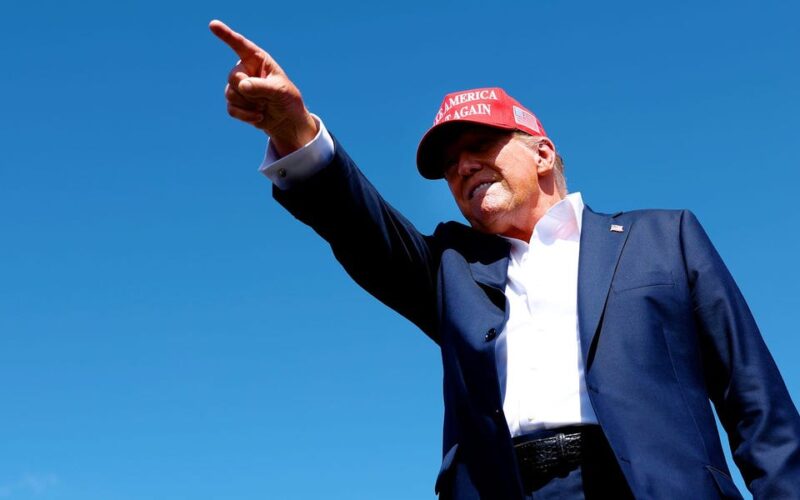Donald Trump is worried about the use of AI in the forthcoming election.
The former president has called AI “very dangerous” and accused his opponent, Kamala Harris, of using it to exaggerate the size of one of her rally crowds.
“There was nobody at the plane, and she ‘A.I.’d it,” he wrote, adding: “She should be disqualified because the creation of a fake image is ELECTION INTERFERENCE. Anyone who does that will cheat at ANYTHING!”
Despite Trump’s claim, the crowds shown in the image were genuine. An official from the Harris-Walz campaign told Business Insider that the photo had been taken by campaign staff and “not modified by AI in any way.”
In the weeks following the post, the former president went on to post several apparently AI-generated memes on Truth Social and X. The images depicted real-life figures, including Kamala Harris and Elon Musk.
He also re-shared on Truth Social a set of dubious images of Taylor Swift and her fans with pro-Trump messaging. While two of the images appeared to show a genuine Trump supporter, others including several images of women in “Swifties for Trump” T-shirts, had telltale signs of AI use.
Trump later denied making the images himself and reflected on the use of AI more generally.
“We’re seeing it all the time,” Trump said of AI-created content. “It’s a little bit dangerous out there.”
The Swift photos had already attracted criticism online and made headlines. While that may have been exactly what Trump wanted, the former president’s willingness to post what looks like AI-generated content without clear labels risks confusing some voters.
Viral misinformation
Experts have long feared the widespread use of AI has the potential to affect elections around the world.
Deepfakes, AI-generated text, and hyper-targeted ads can blur the line between fact and fiction, making it harder for voters to discern what is credible information. Bad actors can also use AI tools to purposely spread realistic disinformation on social media at an unprecedented scale.
Public literacy around AI-generated content also varies. While some people can easily identify fake content, others can still be convinced by fake images or text.
“This content is also going viral before anybody has really fact-checked it,” Eric Wengrowski, CEO of Steg.AI, told Business Insider. “It’s also coming from a former president.”
Wengrowski said while it wasn’t unethical for politicians to share AI-generated content for humourous or satirical reasons, public figures should ensure the content is labeled as AI.
“I do think it’s unethical for politicians to be sharing AI-generated content if it is not clearly labeled with the appropriate watermark,” he said.
Legal consequences
The legality of posting AI-generated images that use the likeness of public figures is also murky.
“It really depends on how the content is being presented,” said Brent Mittelstadt, director of research at the Oxford Internet Institute. “If it’s clearly being presented as a joke or as satire, then you’re in a much stronger legal position.”
“If something to a reasonable person would obviously be satire, then at a minimum, with things like copyright or usage of somebody’s likeness, you can basically get around legal obligations in that way.”
In the case of the Swift-related content, Mittelstadt said it wasn’t clear if the images were being presented as memes or satire: “It’s not to a reasonable person obviously fake, just from the content itself.”
Representatives for Trump did not respond to a request for comment from BI.
Source link
lol

